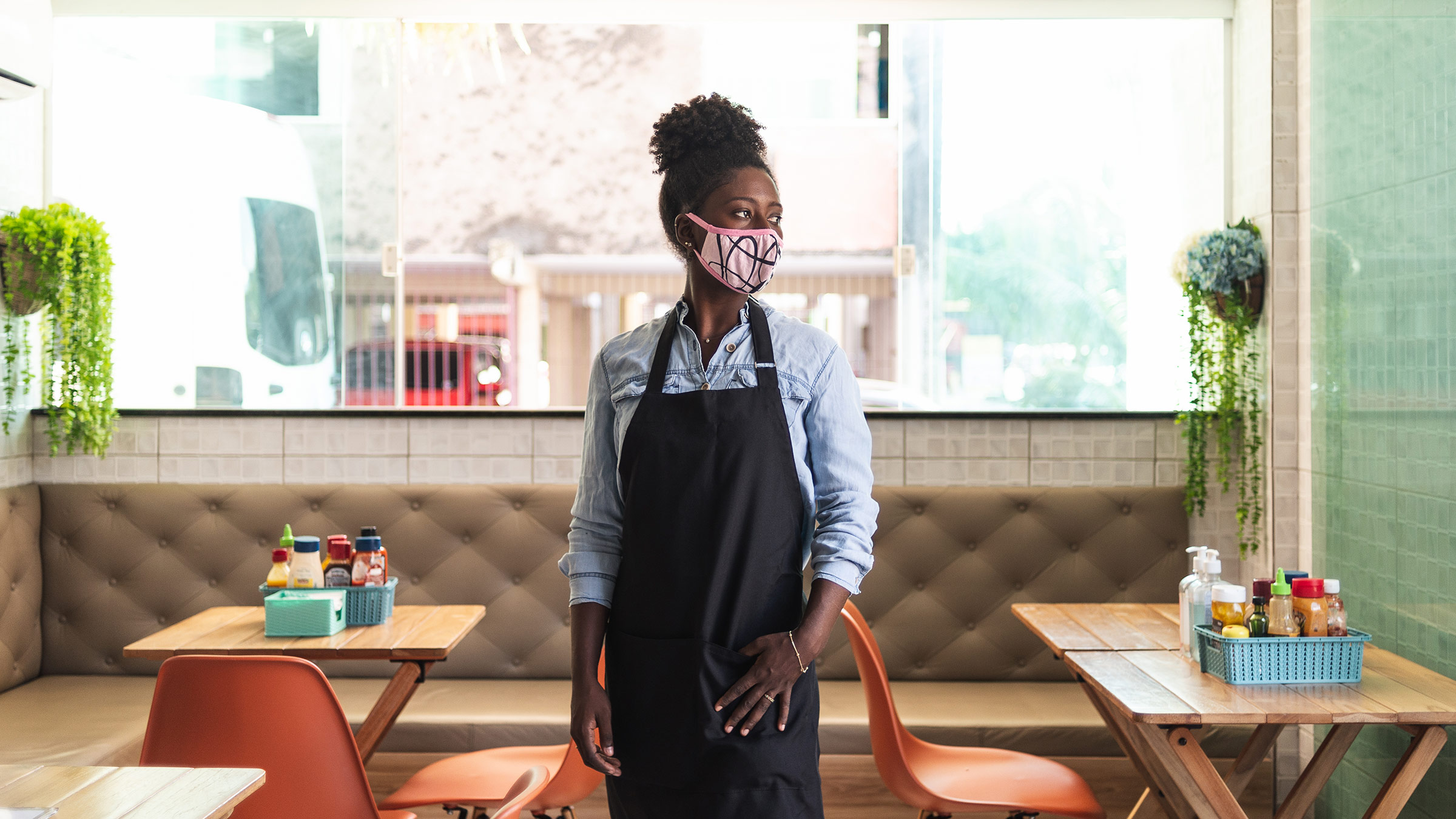The pandemic has turned out to be a triathlon that has tested the stamina of many businesses in unprecedented ways. Evidence is also piling up that small firms have been much more negatively impacted.
Those forces are running headlong into minority-owned firms, who recently reported that their financial stability was more tenuous than businesses overall, according to a January survey of general businesses across the Ninth District, which garnered 89 self-identified minority entrepreneurs.
Revenue and prospects for the future
Thirty-seven percent of respondents said it would be challenging to keep their doors open over the next six months if the existing economic environment continues (Chart 1). “We do not have enough cash reserve to keep our doors open past three months if the current situation does not improve,” a respondent said.
Sixty percent of respondent firms reported lower fourth-quarter revenue in 2020 than a year earlier, with the majority reporting drops greater than 25 percent.
Their expectations for first-quarter revenue this year in comparison to last are considerably pessimistic; 51 percent of firms expect their income to be lower than in 2020 and here, too, most estimate declines were greater than 25 percent (Chart 2). One respondent in the food and beverage industry went so far as to estimate a decline of more than 75 percent.
Resilience shines through a mix of optimistic and gloomy prospects. “Even if sales dropped 35 percent, we would still be profitable,” said a manufacturer. But the reality is harsh and the future uncertain for many.
Employment and compensation
Staffing levels among this subset of surveyed businesses offer a view into the impact of COVID-19 on their workforce.
Forty-three percent of respondents reported staff reductions within the past 12 months, while 38 percent have been able to maintain 2019 levels, and 15 percent have done—albeit modestly—some hiring.
Industry patterns among minority businesses seem similar to those of all other businesses.
The professional services; finance, insurance, and real estate; health care; and manufacturing sectors saw little or no change in their staffing levels over the past 12 months. The modest increases mentioned earlier all happened in these industries as well.
In contrast, all respondents in the hospitality industry said they have reduced staffing by more than 25 percent. One restaurant owner said their business was operating “at bare minimum.” Prior to the pandemic, normal operations required at least six kitchen workers, three bartenders, and six front-of-the-house staff; today, a total of three employees keep the restaurant’s lights on.
Twenty-five percent of respondent firms indicated they had to cut wages since the pandemic started. The hospitality industry continues to be the hardest hit, with more than two-thirds of respondents in that sector saying they’ve cut compensation by more than 10 percent.
In construction and manufacturing, wages were mostly unchanged and, in some instances, were even raised due to scarce worker supply. One manufacturer said that hiring was “tight due to other manufacturers also hiring, and [we] were forced to make a one-off wage adjustment for direct labor in the fall of 2020 in order to remain market competitive.”
Resilience and hope for a safer environment
The grit of these entrepreneurs is reflected in their hopes for the near future. Fifty-six percent of respondents expect to maintain current staffing levels over the next three months, and 19 percent even see some growth, offering some hope for stability.
Being pragmatically optimistic, some are counting on immunization to change the course. The general sentiment is that a safer environment that allows for higher mobility will bring positive change. As one respondent put it, “We can’t say anything accurate right now if the threat is still outside and uncontrollable.”
Not all industries are created equal, and they are affected differently by economic shocks. COVID-19 has negatively impacted some businesses more than others and has also shone a brighter light on the disparate conditions that some members of the community have faced since before the pandemic.
Erick Garcia Luna is a Minneapolis Fed regional outreach director. In this role, he focuses on gathering and analyzing economic intelligence on the regional economy to help inform the work of the Fed. Follow him on Twitter @ErickGarciaLuna.






